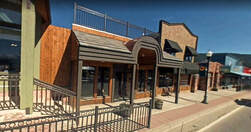
In this month's article, I would like to visit Woodland Park, Colorado. This town is so steeped in forgotten history that I will likely revisit it a few times. That said; today's tale is about a piece of property that barely missed Wal-Mart's wrecking ball and housed some of the world's earliest skiing enthusiasts.
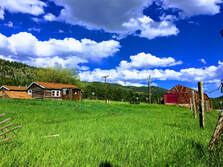
I am focusing on land that was sold; in 2005, to Roger Thompson of the Wal-Mart real estate corporation. His intention was to develop a low-end department store combined with a grocery store. This news sparked community outrage over fears the store would eclipse main street businesses, damage historical property, and destroy the city's small-town quality of life. That April, town hall meetings were a roar with accusations, conflicts of interests, and preservation concerns
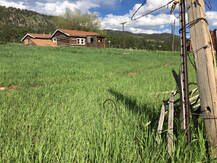
They pointed to the fact that city voters had already voted; in 1988, to not allow the town council to build city-funded infrastructure. This infrastructure was designed to entice Wal-Mart into opening a store in Woodland Park. The difference between 1988 and 2005 is that Teller County's population nearly doubled in those 17 years. With so much growth Wal-Mart no longer needed incentives to be interested in opening up shop.
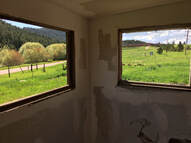
Arguably Wal-Mart did not wreak all of the havoc that people feared, but the list of businesses that closed, opened, and closed again since the Wal-Mart opened is too large to keep up with. It’s a safe bet to say that the small retail-business market in Woodland Park became more volatile, but as a whole, the town seems to be better off with Wal-Mart and its tax revenue.
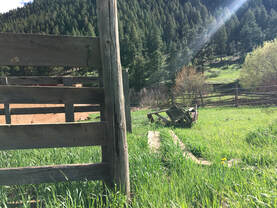
The town hall discussions concerning Wal-Mart was where we learned of the land’s historic significance. In response to these (and other) concerns Wal-Mart assured the people of Woodland Park that they would; preserve historic buildings, set aside 37% of the land for open space, pave the Crystola trail, and create a bronze sculpture of a local hero. As soon as the development was approved by the city council the land was transferred to “private developers” and no one heard from Roger Thompson again. These private developers only followed through with two of Rodgers’ promises; they preserved the historic buildings on the land and paved less than a mile of the Crystola trail.
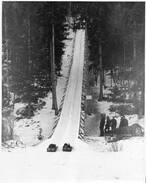
The buildings that were spared served many uses during its time. The most obvious is that it was used as a cattle ranch in the 1800s. What is not so obvious is it was once the hub of Southern-Colorado Skiing and was the home to one of the first “ski clubs” west of the Mississippi River, The Silver Spruce Ski Club. This area was one of three ski areas developed by Don Lawrie and the buildings that remain were once used as a warming house for Don’s crew. Don was a pioneer of the sport of skiing and eventually became the president of the Silver Spruce Ski Club
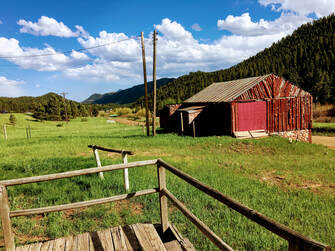
Don developed ski areas with the help of volunteers and he funded this with the little donations they could put together. This was demanding physical labor that was done during the heat of summer.
Lawrie was quoted in the book “Lost Ski Areas of Colorado” saying; “Back then, the ski club built all their areas with donations and with volunteer labor. We never had any money, and we had to improvise and make do. We worked hard, we skied hard and we had a wonderful time.” 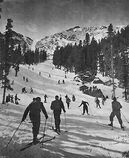
At this time skiing was considered somewhat barbaric and was not widely accepted in the United States. None-the-less Don encouraged people to try the sport and coached people to enter tournaments around Colorado. In addition to being a mentor to new skiers, he also participated as a competitor in cross-country and jumping events. Some of these events were said to have drawn up to 800 people. The competitions evolved into a great fundraising opportunity for many of the local ski clubs.
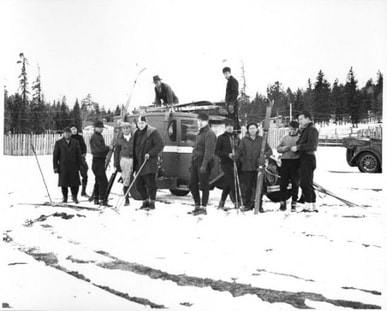
In 1929 Don implemented a plan to reduce the club membership fees in order to make skiing available to more people. Also at that time, he merged his club with the US Western Amature Ski Association. This incorporation literally brought busloads of people who were interested in skiing to the Edlow course in Woodland Park.
By 1936 Don’s incorporation of local ski clubs had grown out of its cross-country skiing roots and evolved into a club that was more focused on downhill and slalom skiing. The new focus of the club and the larger group brought with it a new name, “The Pikes Peak Ski Club''. That same year he adapted an old Whippet automobile engine into a mechanical tow rope, to help people up the hills. This made it so people could get up the hill without using busses or hiking. More interestingly this was a first of a kind tow rope that was widely mimicked in the Western United States 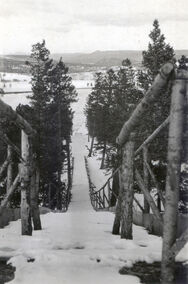
In 1948, Don Lawrie had become the Pikes Peak Highway administrator. He decided to find a new ski area that would be less windy and have more shade. With his army Weasel, he scouted a north-facing slope on Pikes Peak. This slope would later become the “Elk Park Winter Sports Area”, but it was better known as the “Pikes Peak Ski Area”. The ski run was originally cleared by the Highway Road crew, but only when they could take time away from their normal responsibilities. The area was completed by volunteers including Soldiers from Fort Carson and students from Colorado College. These hearty volunteers spent most summer weekends working on the ski runs. By night they would sleep under the stars with just a sleeping bag. Similar to the Woodland Park Ski run, a warming house was used however; in this instance, it was an old CCC building that was moved to the base of the new ski area.
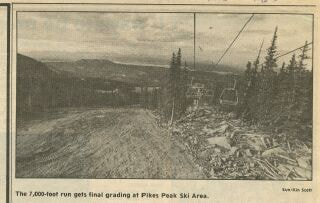
In 1954, skiing was finally authorized at Elk Park. Don had created a fun and affordable ski destination. All people needed was skis, a $1 toll for the highway, and an additional fee for using the tow rope. People flocked from the nearby cities to enjoy an affordable afternoon skiing.
Don then went on to be influential in the formation of the non-profit “Pikes Peak Ski Corporation”. This charity was used to finance improvements to the ski areas for many years. Don served on the Board of Directors of the organization until the mid-sixties. 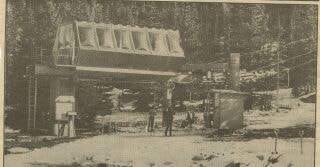
Pikes Peak became the major ski area for Colorado Springs for many years. The ski area was very small compared to runs in places like Vail Colorado or Keystone Colorado. In the early 1980’s they added a $700,000 triple chair made by Poma-USA. The Poma provided new terrain above the timberline, but snow is really hard to come by in this area. The trails were often wind-blown and packed. After the lift was put in the ski area had a terrible season, with very little turnout. Subsequently, it was not able to pay its taxes or pay Poma-USA for their newly installed lift.
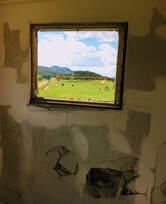
Skiing on Pikes Peak or “Americas Mountain” continued until the mid-1980s. By this time the operation was becoming increasingly expensive to maintain. This is because all of the snow was man-made or shipped down from higher elevations. The city of Colorado Springs purchased the property for a brief period. But it was promptly determined to be too expensive and was sold again to Vail Resorts. The lack of snow and increased costs made it a bad investment. Vail Resorts took the opportunity to close the ski area after the 1984 season. Not only did they close down their competition, but they also closed the chapter of U.S. history about Skiing in Southern Colorado.
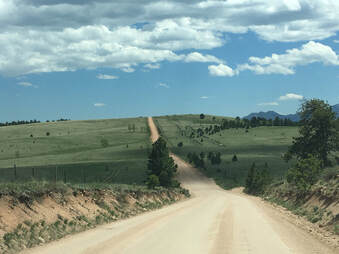
The heyday of Pikes Peak’s organized skiing took place near the Glen Cove area and Woodland Park. These were the sites that Don Lawrie and his friends chose before Elk Park grew into a skiing destination. Heck, it was even before Colorado was considered a ski destination. Don’s grand ideas never wavered and he was fortunate to have seen many of them become a reality. Lawrie died in 2000 and was long retired by then. But it was his dreams and ambitions that helped to create the ski scene in Colorado. He brought the skiing industry to life before it boomed in higher elevations and in well-known towns like Aspen, Vail, or Telluride.
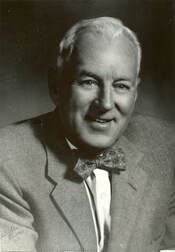
Don’s grandson; Don Sanborn, was quoted in Colorado Springs, in regards to his Grandfather saying: “Even in his 90s, he still harbored a dream of starting a ski area, like at some hill behind the Wal-Mart in Woodland Park. We told him, ‘You need to see what ski hills and areas are really like now!'”. While Don was well aware of what modern ski resorts had become, he longed for a more simple and pure version of his sport. And to some degree, we can all understand that. To Don, this wasn’t an unreasonable idea, especially when we consider that behind this Wal-Mart was where he helped to make one of the first ski runs in Colorado. This is why I propose that the Woodland Park Wal-Mart follow through with its promise of building a bronze statue, by erecting a statue of Don Lawrence and the Silver Spring Ski Club.
Photos From The Day:
1 Comment
|
AuthorThank you for visiting! This is a collection of media from the lost and abandoned corners of the world. Please have a look around, I hope you enjoy. Archives
April 2022
Categories
All
|
Libraries |
Support |
|


